 W
WThe AEG G.I was a three-seat, twin-engined German biplane bomber aircraft of World War I. It was tested and found to be viable for air-fighting in the latter half of 1915 but performed poorly, necessitating the development of the AEG G.II.
 W
WThe AEG G.II was a German biplane bomber aircraft of World War I developed from the AEG G.I, with more powerful engines. The G.II was typically armed with three 7.92 mm (.312 in) machine guns and 200 kg (440 lb) of bombs. The bomber suffered stability problems, and many G.IIs were fitted with additional vertical tail surfaces on each side of the fin and rudder to improve flight handling characteristics.
 W
WThe AEG G.III was a German biplane bomber aircraft of World War I developed from the G.II. Like its predecessor, it was only built in small numbers and saw limited operational use, mainly far from the main fronts of the war.
 W
WThe AEG G.IV was a biplane bomber aircraft used in World War I by Germany. It was developed from the AEG G.III, with refinements to power, bomb-load and dimensions. Coming into service in late 1916, it featured a bomb capacity twice as large as that of the AEG G.II, but was still considered inadequate in terms of offensive capacity and performance. Further improvements led to the development of the G.V, but the Armistice came before the replacement could become operational. Serving late in the war, the AEG G.IV managed to achieve some operational success in reconnaissance and combat roles.
 W
WThe AEG G.V was a biplane bomber aircraft of World War I, a further refinement of the AEG G.IV. The type saw limited production before the Armistice, and never entered operational service. It featured a 600 kg (1,320 lb) bombload.
 W
WThe AEG N.I was a German biplane night-bomber which saw limited action during World War I. A total of 37 were built. Several were used postwar as airliners.
 W
WThe AEG R.I or Riesenflugzeug 1 was a four-engined biplane bomber aircraft of World War I manufactured by AEG.
 W
WThe Albatros C.III was a German two-seat general-purpose biplane of World War I, built by Albatros Flugzeugwerke. The C.III was a refined version of the successful Albatros C.I and was eventually produced in greater numbers than any other C-type Albatros.
 W
WThe Albatros G.I,, was a four-engined German biplane bomber of World War I.
 W
WThe Albatros G.II,, was a twin-engined German biplane bomber of World War I.
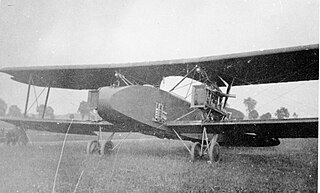 W
WThe Albatros G.III, was a German bomber aircraft development of World War I. It was a large, single-bay biplane of unequal span and unstaggered wings. Power was provided by two Benz Bz.IVa pusher engines installed in nacelles carried between the wings. An unusual feature of the design was that the lower wing was provided with cutouts for the propellers, allowing the engine nacelles to be mounted further forward than would have been otherwise possible. Few were built, these seeing service mostly on the Macedonian Front in 1917.
 W
WThe Daimler G.I, originally designated Daimler R.I, was a bomber aircraft designed and built in Germany from early in 1915.
 W
WThe DFW R.II was a German bomber aircraft of World War I. It was developed at a request by the Luftstreitkräfte in spring 1917 after their experience with the R.I had been generally positive, but only two were ever built despite six being ordered.
 W
WThe DFW R.III was a German bomber aircraft designed during World War I, but which had not yet been built when the end of the war led to the project's cancellation. Conceptually similar to DFW's preceding R.I and R.II designs, the R.III was to have been a much larger aircraft, powered by eight engines. As with the previous designs, these were to be housed inside the fuselage, driving propellers by long driveshafts. In the R.III design, however, these propellers were to be mounted on a nacelle in the interplane gap. Each end of this nacelle would carry two co-axial propellers, each driven by a separate engine. Had it been built, the R.III would have been the largest aircraft in the world at the time.
 W
WThe Etrich Taube, also known by the names of the various later manufacturers who built versions of the type, such as the Rumpler Taube, was a pre-World War I monoplane aircraft. It was the first military aeroplane to be mass-produced in Germany.
 W
WThe Friedrichshafen G.I was a prototype heavy bomber aircraft that was built in Germany by Flugzeugbau Friedrichshafen in 1915. It was Karl Gehlen's first design for the company, and although it was not produced in quantity, it provided the foundation for the later, highly successful bombers culminating in the G.III.
 W
WThe Friedrichshafen G.II was a medium bomber aircraft that was designed and manufactured in Germany during World War I by Flugzeugbau Friedrichshafen. The plane was used by the Luftstreitkräfte for tactical and limited strategic bombing operations.
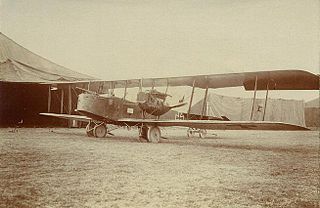 W
WThe Friedrichshafen G.III was a medium bomber designed and manufactured by Flugzeugbau Friedrichshafen. They were used by the German Imperial Air Service during World War I for tactical and limited strategic bombing operations. After the end of the war a number of Friedrichshafen bombers were converted into transport aircraft while a small number also saw service as dedicated airliners.
 W
WThe Friedrichshafen G.IV and G.V respectively were medium bombers that were designed and manufactured in Germany during World War I by Flugzeugbau Friedrichshafen. The G.IV saw limited use by the Luftstreitkräfte for tactical and limited strategic bombing operations, while the G.V and a follow-on design, the FF.62 did not fly until after the Armistice.
 W
WThe Gotha G.I was a heavy bomber used by the Luftstreitkräfte during World War I.
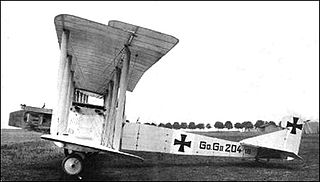 W
WThe Gotha G.II series was a heavy bomber used by the Luftstreitkräfte during World War I.
 W
WThe Gotha G.III was a heavy bomber used by the Luftstreitkräfte during World War I. It succeeded the G.II in production and differed primarily in the choice of powerplant. The eight-cylinder Mercedes D.IV, which had proven highly susceptible to crankshaft failure, was replaced by the new six-cylinder 190 kW (260 hp) Mercedes D.IVa engine. The G.III also had a strengthened fuselage with an extra 7.92 mm (.312 in) machine gun firing through a ventral trapdoor. The G.III was also the first bomber to have a tail gun with a potential 360 degree arc of fire.
 W
WThe Gotha G.IV was a heavy bomber used by the Luftstreitkräfte during World War I. It is the world's first large-size airplane in mass production.
 W
WThe Gotha G.VIII, GL.VIII, G.IX, and G.X were a family of bomber aircraft produced in Germany during the final months of World War I. Based on the Gotha G.VII, they were intended as high-speed tactical bombers featuring advanced streamlining for their day.
 W
WThe Gotha G.V was a heavy bomber used by the Luftstreitkräfte during World War I. Designed for long-range service and built by Gothaer Waggonfabrik AG, the Gotha G.V was used principally as a night bomber.
 W
WThe Gotha G.X was an experimental bomber aircraft designed and built in Germany from 1917.
 W
WThe Gotha WD.11 was a torpedo bomber seaplane developed in Germany during World War I. When the general configuration of the Gotha WD.7 proved promising, Gotha set to work designing a much larger and more powerful aircraft along the same general lines. Like its predecessor, it was a conventional biplane with twin engines mounted tractor-fashion on the lower wing. The pilot and observer sat in tandem, open cockpits and the landing gear consisted of twin pontoons. 12 examples were built for the Imperial German Navy.
 W
WThe Gotha WD.14, WD.20, and WD.22 were a family of biplane torpedo bomber floatplanes developed in Germany during World War I.
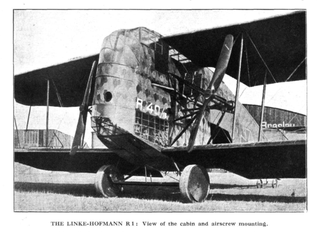 W
WThe Linke-Hofmann R.I was a heavy bomber aircraft designed and built by the German company Linke-Hofmann during World War I. Only four were built and the type never saw service with the Luftstreitkräfte.
 W
WThe Linke-Hofmann R.II was a bomber aircraft designed and built in Germany from 1917.
 W
WThe LVG G.III was a large, twin engine triplane bomber built in Germany near the end of World War I. Only one was completed.
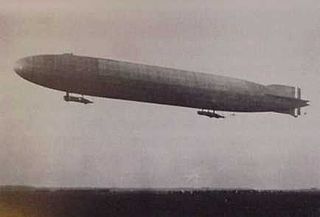 W
WZeppelin LZ 54, given the military tactical designation L 19, was a Zeppelin of the Imperial German Navy. While returning from her first bombing raid on the United Kingdom in early 1916, she came down in the North Sea. Her crew survived the crash, but drowned after the crew of a British fishing vessel refused to rescue them; at the time this was a widely reported and notorious incident.
 W
WThe LZ 61 was a World War I German Navy airship, allocated the tactical numbering 'L 21'. It carried out a total of ten raids on England, and 17 reconnaissance missions.
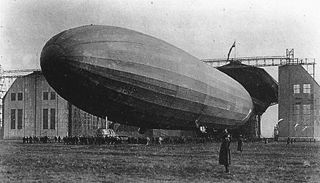 W
WZeppelin LZ 104 and nicknamed Das Afrika-Schiff, was a World War I German dirigible, famous for attempting a long-distance resupply mission to the beleaguered garrison of Germany's East Africa colony.
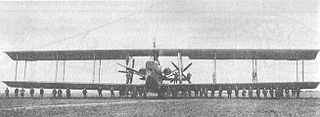 W
WA Riesenflugzeug, sometimes colloquially referred to in English as an R-plane, was any member of a class of large World War I German bombers, possessing at least three aircraft engines, although usually four or more engines. These were large multi-engine aircraft capable of flying several hours with larger bomb loads than the smaller Grossflugzeug bombers such as the Gotha G.V.
 W
WThe Rumpler G.I was a bomber aircraft produced in Germany during World War I, together with refined versions known as the G.II and G.III.
 W
WThe Sablatnig N.I was a bomber aircraft developed in Germany during the First World War, a development of the Sablatnig C.I adapted for night operations.
 W
WThe Siemens-Schuckert Forssman was a prototype bomber aircraft designed and built in Germany in 1914 and 1915. When its performance proved inadequate for its intended role, even after numerous modifications, the German Inspectorate of Flying Troops eventually accepted it into service as a trainer. Shortly after its acceptance into military service, the aircraft's fuselage fractured while on the ground, ending its career.
 W
WThe Siemens-Schuckert L.I was a large, three-engined biplane bomber aircraft, built in Germany towards the end of World War I. It was a twin boom design, strongly influenced by the successful Caproni Ca.3. Three were built but not used operationally.
 W
WThe Siemens-Schuckert R.II was a prototype bomber aircraft built in Germany during World War I. It was one of six aircraft based on the Siemens-Schuckert R.I that were originally intended to be identical, but which each developed in a different direction and were designated as different aircraft types by the German Inspectorate of Flying Troops. Although the R.II was the first of the batch to be completed, it was the last accepted into military service, and then only as a trainer.
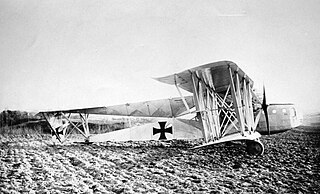 W
WThe Siemens-Schuckert R.VI was a bomber aircraft built in Germany during World War I. It was one of six aircraft based on the Siemens-Schuckert R.I, which were originally intended to be identical. Each developed in a different direction and were designated as different aircraft types by the German Inspectorate of Flying Troops.
 W
WThe Siemens-Schuckert R.VII was a bomber aircraft built in Germany during World War I. It was one of six aircraft based on the Siemens-Schuckert R.I that were originally intended to be identical, but which each developed in a different direction and were designated as different aircraft types by the German Inspectorate of Flying Troops.
 W
WThe Siemens-Schuckert R.VIII was a bomber aircraft designed and built in Germany from 1916.
 W
WThe Zeppelin LZ 23 was the 2nd improved L-class Zeppelin, and the eleventh airship of the Imperial German Army, first flown on 21 February 1914 and shot-down by anti-aircraft fire on 23 August 1914.
 W
WZeppelin LZ 38 was Zeppelin P Class airship of the German Imperial Navy. It was the first to bomb London, United Kingdom.
 W
WZeppelin LZ 55 was a P class Zeppeling of the Imperial German Army in World War I. It was shot down by the old British pre-dreadnough battleship HMS Agamemnon in 1916 during Salonika campaign
 W
WZeppelin LZ 66, Imperial German Navy serial L 23, took part in 51 reconnaissance missions during World War I and on 21 August 1917 it was shot down by Second Lt Bernard A. Smart, flying a Sopwith Pup.
 W
WZeppelin LZ 102 was a airship of the German Imperial Navy. It was planned that it would attempt a mission to Africa but it was destroyed and its sister ship LZ 104, nicknamed Das Afrika-Schiff, made a famous attempt at a long-distance resupply mission to the beleaguered garrison of Germany's East Africa colony.
 W
WThe LZ 85, tactical number L 45, also known as Zeppelin of Laragne by the French public, was a World War I R-Class zeppelin of the German Navy that carried out a total of 27 flights, including 3 raids on England and 12 reconnaissance missions.
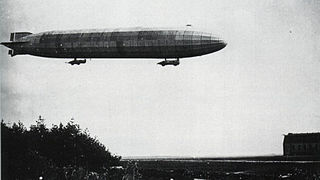 W
WThe Zeppelin P Class was the first Zeppelin airship type to be produced in quantity after the outbreak of the First World War. 22 of the type were built as well as 12 of a lengthened version, the Q Class . They were used for many of the airship bombing raids on the United Kingdom in 1915-16, for naval patrol work over the North Sea and Baltic and were also deployed on the eastern and south-eastern fronts.
 W
WThe Zeppelin R Class was a type of rigid airship developed by Zeppelin Luftschiffbau in 1916 for use by the Imperial German Navy and the German Army for bombing and naval patrol work. Introduced in July 1916 at a time when British air defences were becoming increasingly capable, several were lost in the first months of operation, leading the Germans to reconsider their technical requirements and eventually to develop airships capable of bombing from a greater height. Most surviving examples were modified to meet these requirements, by reducing weight at the expense of performance. A total of 17 were built.
 W
WThe Zeppelin-Staaken R.V was one of a series of large bombers called Riesenflugzeugen, intended to be less vulnerable than the rigid airships in use at the time.
 W
WThe Zeppelin-Staaken R.VI was a four-engined German biplane strategic bomber of World War I, and the only Riesenflugzeug design built in any quantity.
 W
WThe Zeppelin-Staaken R.XIV was a development of the Zeppelin-Staaken R.VI. This was one of a series of large bombers called Riesenflugzeuge, intended to be less vulnerable than the dirigibles in use at the time.
 W
WThe Zeppelin-Staaken R.XVI(Av) was a very large bomber (Riesenflugzeug), designed and built in Germany during 1918.
 W
WThe Zeppelin-Staaken Riesenflugzeuge were a series of very large bomber aircraft - Riesenflugzeuge, usually powered by four or more engines, designed and built in Germany from 1915 to 1919.